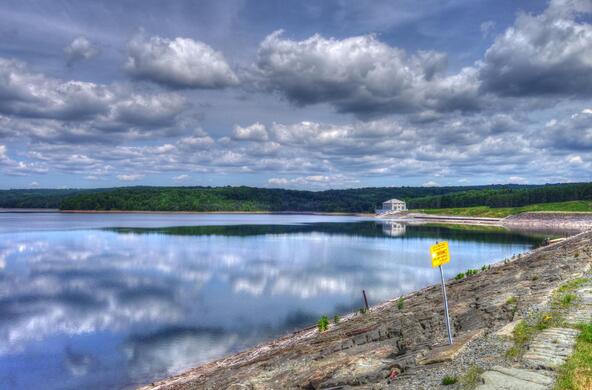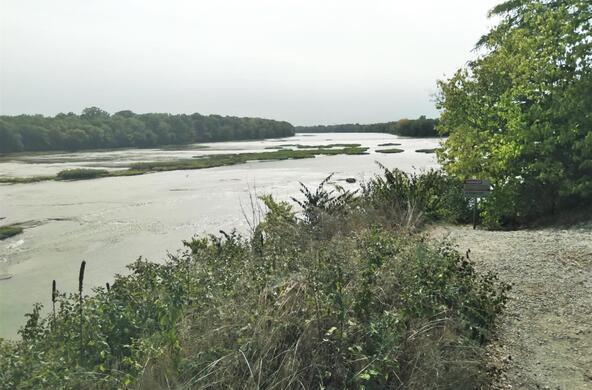I hang around ecologists most of the time, and when I go into the field with some of them, I frequently hear them say that a local stream is “unhealthy.” Now, I can imagine that if it contained raw sewage or toxic and corrosive chemicals, it would be pretty clear to everyone that a stream was unhealthy. But, are there other criteria that pertain as well?
The most extreme examples of unhealthy streams I have seen are in Phoenix and Los Angeles, where streams have been converted to straight, concrete-lined culverts that carry water in a raging torrent when it rains, but most of the time they carry nothing at all. So, my first criterion for a healthy stream is that it should not be a prisoner to its channel. A healthy stream will not be incised and it will retain the capacity to overflow its channel every now and again and spread out over its floodplain. The vegetation in the floodplain will benefit from sediment deposited during floods, and the floodplain will provide a reservoir to hold floodwaters that might be problematic downstream.
Unfortunately, many urban and suburban areas are covered with concrete—what ecologists call impervious surface—that maximizes runoff, erodes stream channels and causes streams to be incised. If we allow more infiltration of rainfall into the soil in the uplands, that will reduce its rapid, or quick-flow to stream channels, where it induces flooding and erosion. A river is a reflection of the watershed it drains; a watershed that has been highly altered by concrete and development will contain a river with greatly compromised health.
A healthy stream will have a lot of obstacles in its channel—such as rocks and fallen logs. Some of these will capture materials washing down the stream to form small debris dams that produce pools of water on their upside and spills of water as it passes over the debris. This spillage mixes bubbles of air into the water, increasing its oxygen content to the benefit of stream invertebrates and fish. Rocks in the stream channel produce riffles of shallow flow, which are the preferred habitat for some species. In short, a healthy stream will not simply carry water downslope at high speeds, but promote a slow, meandering movement of water that rejuvenates it. It may look inefficient, but it will be a healthy ecosystem.
The floodplain is an intimate part of a healthy stream. Periodically, when a stream overflows its banks and spreads out over the floodplain, small temporary ponds and puddles are filled. These are not only excellent wildlife habitat, but they also harbor denitrifying bacteria, which convert nitrate in the streamwater to the nitrogen gas (N2) that fills 78% of our atmosphere. Without the removal of nitrate, streams and rivers carry increasing loads of nitrate to the sea, where it promotes blooms of algae, fish kills, red tide and other undesirable seaside conditions. Denitrifying bacteria provide one of nature’s services, cleaning streamwaters on their way to the sea. To operate, denitrifying bacteria need suboxic (low oxygen) soils or sediments with lots of organic matter.
The connection of a stream to its floodplain was overlooked in more than a century of land development, which favored building houses in the floodplain zone. Many of these are now flooded catastrophically during large floods. Proper zoning will prohibit building of structures in floodplains—not just to save money for the insurance industry, but to allow these floodplains to serve their proper role as part of the larger stream ecosystem.
A few months ago, this blog examined ecosystem restoration and designer ecosystems (http://blogs.nicholas.duke.edu/citizenscientist/designer-ecosystems/). Stream restoration is promoted in many areas to restore the natural operation of stream ecosystems. These efforts are worthwhile, but as my earlier essay outlines most such efforts fall short in replicating the services of nature. When new plans for land development are before the public, stream ecosystems and their floodplains should be at the top of the list for preservation.
References
Allan. J.D. and M.M. Castillo. 2007. Stream Ecology, Second Edition. Springer.
Environmental Protection Agency. 2015. Connectivity of Streams and Wetlands to Downstream Waters: A Review and Synthesis of the Scientific Evidence. https://cfpub.epa.gov/ncea/risk/recordisplay.cfm?deid=296414&CFID=57703…
Paul, M.J. and J.L. Meyer. 2001. Streams in the urban landscape. Annual Review of Ecology and Systematics 32: 333-365.
Violin, C.R., P. Cada, E.B. Sudduth, B.A. Hassett, D.L. Penrose, and E.S. Bernhardt. 2011. Effects of urbanization and urban stream restoration on the physical and biological structure of stream ecosystems. Ecological Applications 21: 1932-1949.






